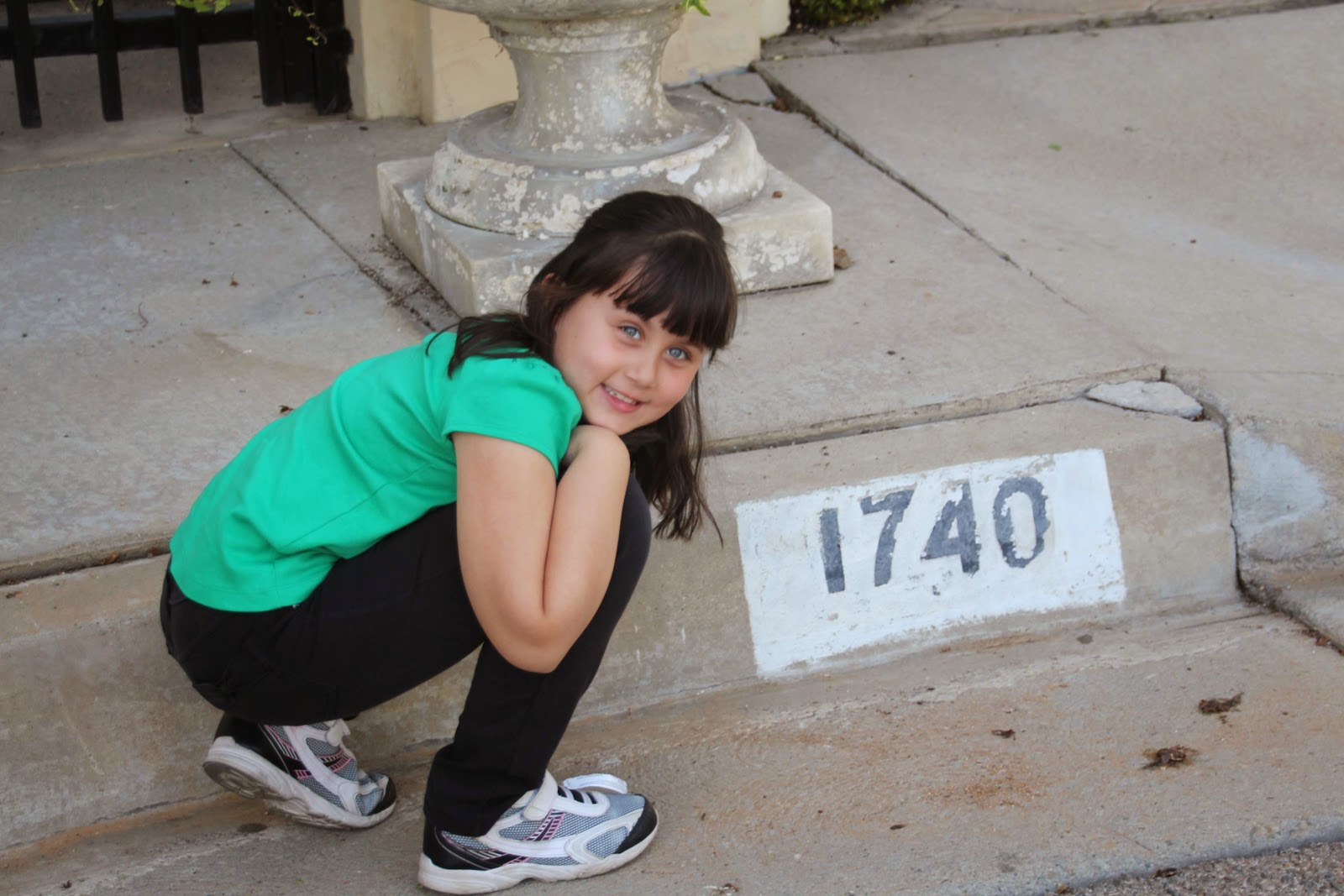
The site of Campo de Cahuenga (CHL 151) is really neat-- sadly it is only open the first Saturday of every month. They have a brick outline where the original adobe once stood (which actually would have gone right through Lankershim Boulevard!).
Some of the bricks and walls remain behind the fence.
It was here that the Articles of Capitulation were signed on January 13, 1847 ending the Mexican-American War in California.
The site was also part of the ranching operation for the San Fernando Mission, a stop for the Butterfield Stagecoach, and a Civil War encampment.
Their website is beautiful! Full of history, coming events, and photos.
We will definitely come back when it's open to examine the museum, library, and archaeological dig on site!
Our next site was also closed for the day-- the Cecil B. DeMille Studio Barn (CHL 554).
This barn was rented by Cecil B. DeMille in 1913 to help him make the first feature-length motion picture filmed in Hollywood, The Squaw Man.
The barn was originally located at the corner of Selma and Vine streets, but was moved in 1927.
This building has been a gymnasium, served as the train depot on the TV show Bonanza, and is now a museum.
The home was designed by Wright for Charles and Mabel Ennis in 1924.
The Textile Block house was designed to be affordable, using concrete as the main building material held in a matrix of steel bars. This house is currently being restored-- and is absolutely gorgeous!!
Frank Lloyd Wright only made four of these homes in Los Angeles. He seemed to think is was a challenge for him, to take something that was very low class in the world of architecture (the textile block) and turn it into something beautiful! He certainly did that with the Ennis House!
This is the view of the home from the road below. It would be such fun to see what it's like on the inside.
I did a little research and found photos of one of his other textile block homes from the inside. If you want to see it, check here.
The second house for the day was a little less impressive. The Frank Lloyd Wright Textile Block House (Thematic), Freeman House (CHL 1011) was falling apart!
It does have a really cool view of the Hollywood sign, but the home itself needs a great deal of work.
The owners actually came out for their morning walk while we were there taking photos in front of their house. Libi walked right up to them, asked if there was a plaque on their house (because it was a historic site), and when they told her no she went right on posing for my photos. Yes, she has been trained well!
The blocks are fascinating to see up close, I just wish that they were better taken care of at this site.
The first mention of the tar pools were back in 1769 and the first excavations were made in 1906 by the University of California. The site was given to the County in 1916 by Captain G. Allan Hancock to be used as a "scientific monument."
Libi hadn't been here since she was two, so she didn't remember any of it.
Near this site on August 3, 1769 the expedition of Don Gaspar de Portolá camped on their way from Mexico to Monterey. This was the group that was beginning the Spanish colonization of California.
Next we went to our third home for the day, Harold Lloyd Estate, a.k.a. Greenacres (CHL 961).
This majestic home in Beverly Hills was well gated and surrounded by security cameras, so the street number and front entrance were as close as we got!
The estate was built in 1929 for silent screen comedian Harold Lloyd. It has 44 rooms and is modeled after a villa in Florence, but no plaque.
The Portola expedition stayed here in 1769 and in 1770 Father Serra said mass here to the Native Americans in the area.
The spring also provided water to the town of Santa Monica.
The Old Santa Monica Forestry Station (CHL 840) moved us closer to the coast.
This site was established in 1887 and was the nation's first experimental forestry station. They tested exotic trees for planting in California.
It was operated by the Board of Forestry until 1893 and the University of California until 1923. Now it is just a beautiful site full or rich foliage.
Sadly when San Pedro was established as the official harbor the pier was dismantled-- nothing remains here today except the plaque.
It was a great day of family fun, with a beautiful ending on the beach.
We can't wait for you to join us for our next California Adventure!

































































0 comments:
Post a Comment